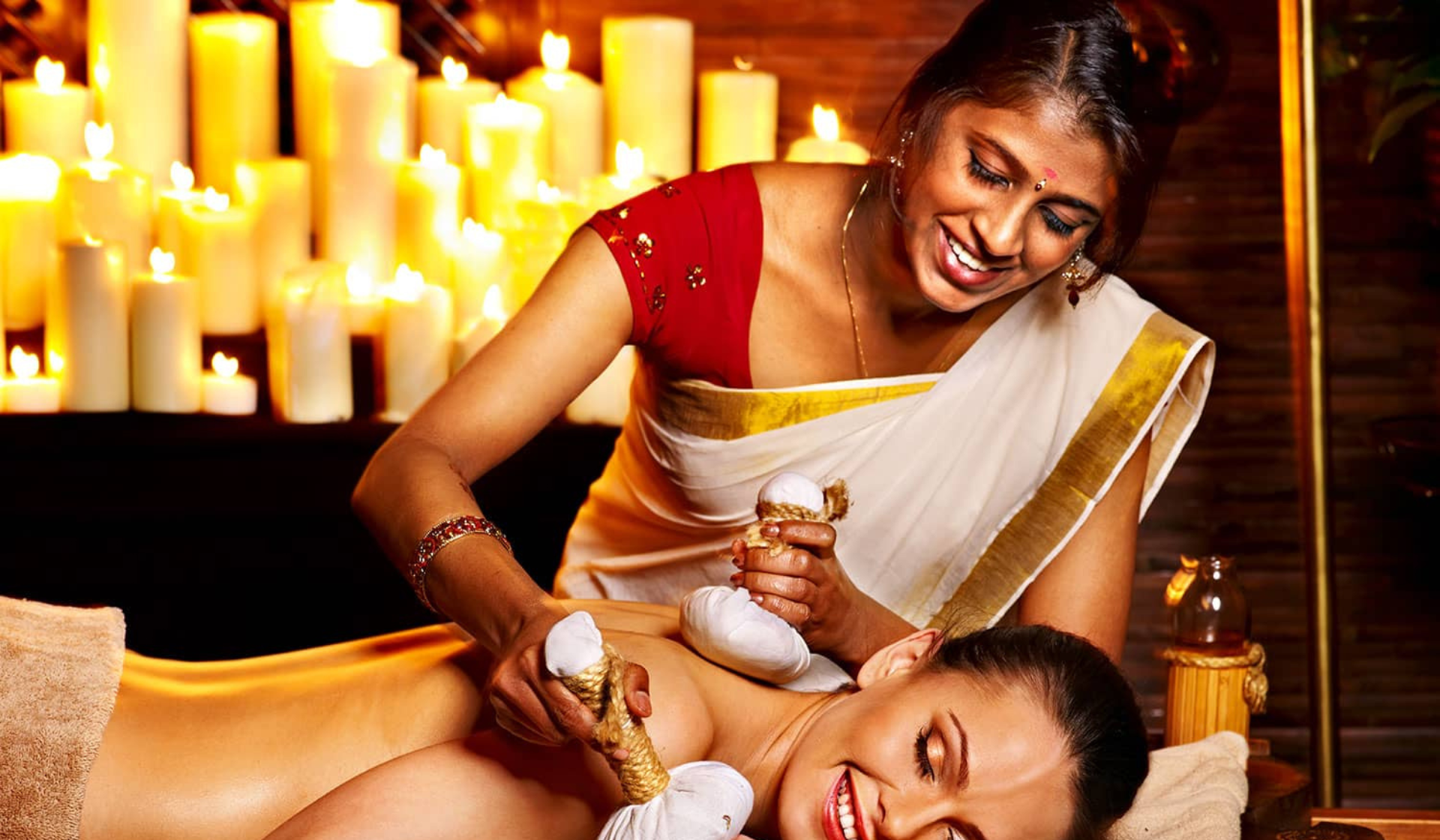Ayurvedic Massage

About Ayurvedic Massage
Panchakarma is a traditional Ayurvedic detoxification and rejuvenation therapy that aims to balance the body, mind, and spirit by eliminating toxins, restoring digestive health, and promoting overall well-being. Ayurvedic massage is an integral part of the Panchakarma process and plays a key role in preparing the body for detoxification, facilitating the release of toxins, and promoting relaxation and rejuvenation. Here’s an overview of Panchakarma and Ayurvedic massage:
Purpose: Panchakarma, which translates to “five actions” in Sanskrit, involves a series of therapeutic procedures designed to cleanse the body of accumulated toxins (ama), balance the doshas (Vata, Pitta, and Kapha), and restore optimal health and vitality.
Panchakarma typically consists of three phases: Purvakarma (preparatory phase), Pradhankarma (main cleansing phase), and Paschatkarma (post-cleansing phase). During the Pradhankarma phase, various detoxification therapies are administered, including specialized massages, herbal therapies, and cleansing procedures tailored to the individual’s constitution and imbalances.
Common Panchakarma therapies include Abhyanga (Ayurvedic oil massage), Svedana (herbal steam therapy), Basti (medicated enemas), Virechana (purgation therapy), and Nasya (nasal administration of medicated oils). These therapies work synergistically to eliminate toxins, improve digestion, and rejuvenate the body and mind.
Purpose: Abhyanga is a traditional Ayurvedic massage therapy that involves the application of warm herbal oils to the entire body using specific massage techniques. It is considered one of the most important preparatory treatments in Panchakarma, as it helps to lubricate the tissues, loosen toxins, and promote relaxation and detoxification.
During an Abhyanga session, a trained therapist applies warm herbal oils infused with Ayurvedic herbs to the body, using long, rhythmic strokes and gentle kneading movements. The massage is performed in a systematic manner, starting from the head and working down to the feet, to ensure thorough coverage and stimulation of the body’s energy channels (marma points).
Abhyanga offers numerous benefits for physical, mental, and emotional health, including:
• Nourishing and moisturizing the skin
• Improving circulation and lymphatic drainage
• Calming the nervous system and reducing stress
• Balancing the doshas and promoting overall well-being
• Supporting detoxification and elimination of toxins
- Ayurvedic massage, particularly Abhyanga, is an essential component of the Purvakarma phase of Panchakarma, helping to prepare the body for deeper detoxification and cleansing therapies.
- By lubricating the tissues, stimulating circulation, and promoting relaxation, Ayurvedic massage enhances the efficacy of subsequent Panchakarma therapies and facilitates the release of accumulated toxins from the body.
In summary, Panchakarma and Ayurvedic massage, particularly Abhyanga, are time-tested therapies rooted in the principles of Ayurveda for detoxification, rejuvenation, and holistic well-being. When administered as part of a comprehensive Panchakarma program under the guidance of trained Ayurvedic practitioners, these therapies can help restore balance, vitality, and optimal health to the body, mind, and spirit.
Recovery
Contact Us
- 21/1, Kellys Road, Kilpauk, Chennai - 600010, Tamil Nadu, INDIA
- +91 95667 88054
- alignpeakphysio@gmail.com
